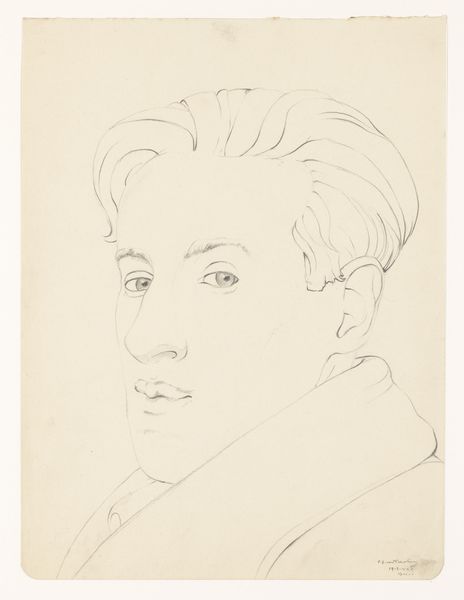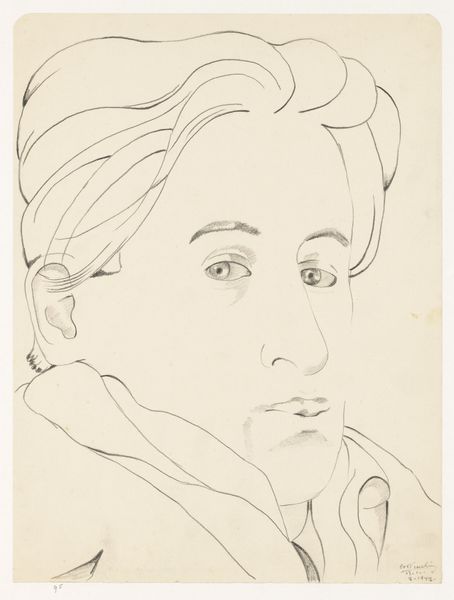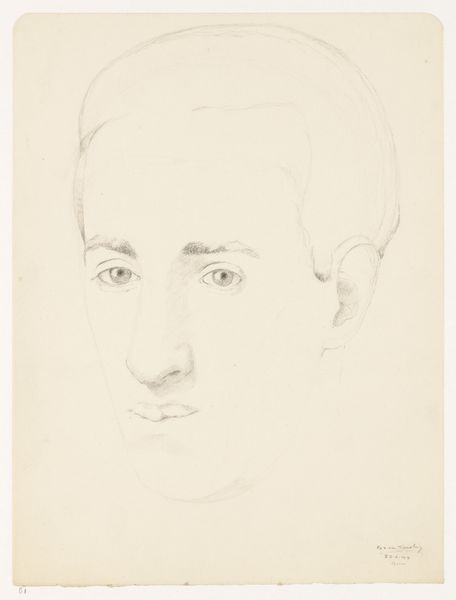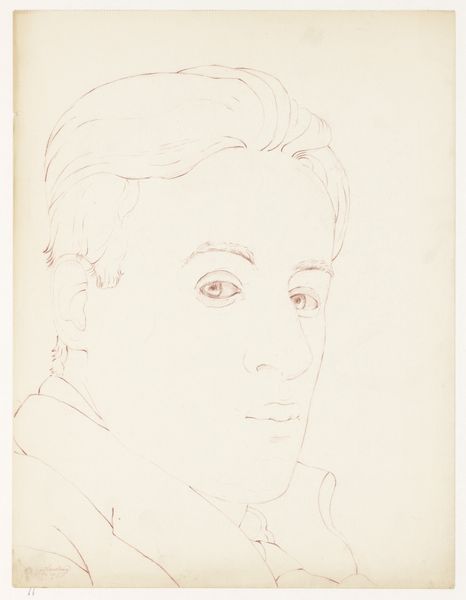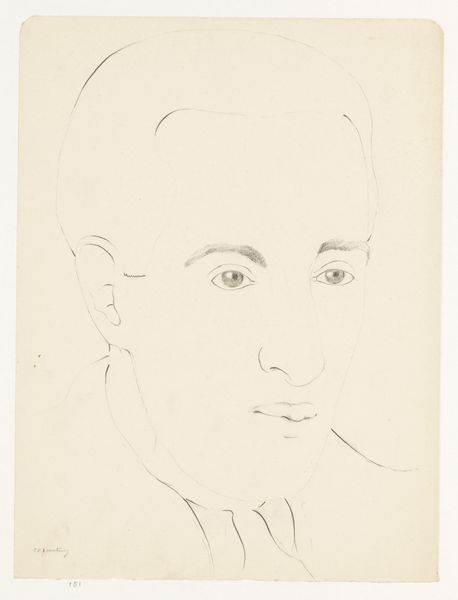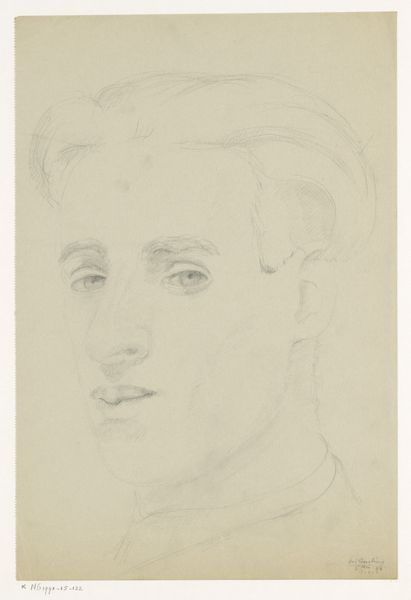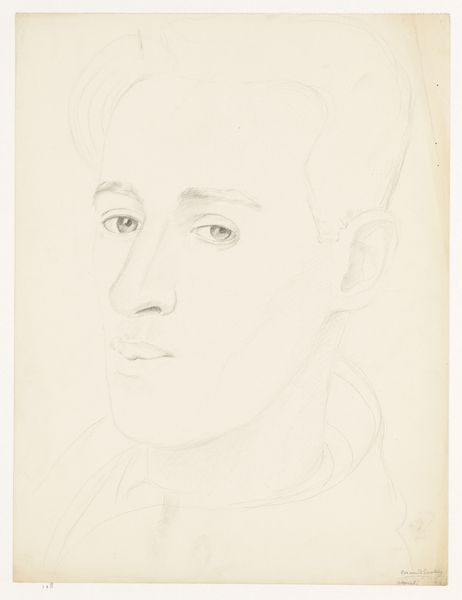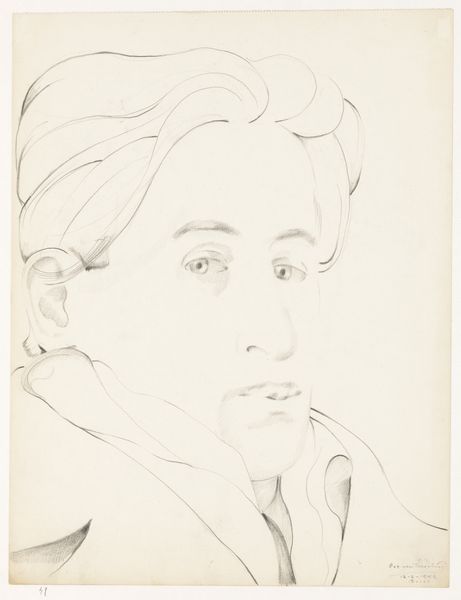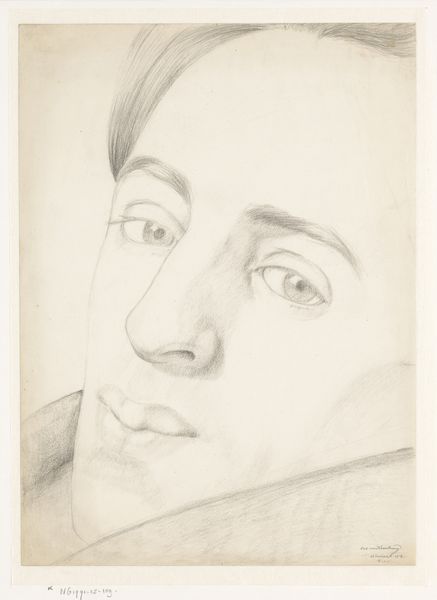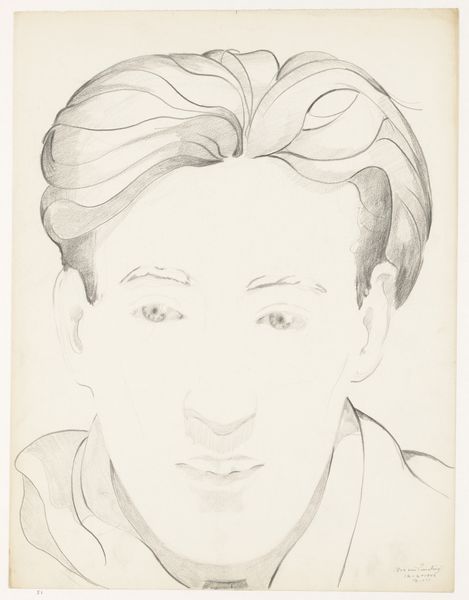
drawing, pencil
#
portrait
#
drawing
#
self-portrait
#
pencil sketch
#
caricature
#
pencil
#
modernism
Dimensions: height 32.0 cm, width 24.0 cm
Copyright: Rijks Museum: Open Domain
Curator: This is Cor van Teeseling's "Self-Portrait," a pencil drawing likely created sometime between 1941 and 1948. It's currently part of the Rijksmuseum's collection. Editor: There's an immediate quality of searching about this image. The minimal line work and subtle shading suggest the artist is trying to capture something fleeting or intangible within himself. Curator: The sparseness certainly speaks to the precarious historical context, reflecting perhaps the austerity and uncertainty of wartime Netherlands. It's interesting how the simplicity almost becomes a form of resistance to grandeur. Editor: Exactly. The eyes especially draw me in. Despite the economy of line, they possess a soulful depth. In traditional symbolism, the eyes are windows to the soul, but here, that soul seems vulnerable, questioning. It departs from earlier heroic portrayals of the self. Curator: Yes, gone is the confident gaze of a master. We see a stark, almost raw depiction. It lacks the visual rhetoric common in portraiture, challenging patriarchal structures of the time through the sheer lack of ego on display. Editor: And that choice is significant. We are used to self-portraits conveying control, status, or a curated identity, whereas here, the artist uses understatement as the primary mode of self-presentation. It almost has a childlike naivety that suggests openness and acceptance of oneself. Curator: In that light, one might interpret the drawing’s lack of adornment, typical for this artist, as an indication of his willingness to shed all the signifiers of power. A refusal to hide, filtered through the Modernist ideal of sincerity, perhaps? Editor: It's an intriguing hypothesis. I keep returning to the feeling that Teeseling uses reduction—the sparseness of line, the lack of details—to achieve not emptiness, but rather to amplify the psychological weight of this self-examination. It almost allows us to project our own interpretations into the liminal space provided by his deliberate paring-down. Curator: I agree. Thinking about the period and how visual representation was politicized and used to perpetuate cultural values makes this portrait so striking in its humility and humanism. It certainly resonates with current dialogues around identity. Editor: It’s left me thinking about the ongoing human need for introspective self-expression. A simple line, strategically placed, can unlock so much.
Comments
No comments
Be the first to comment and join the conversation on the ultimate creative platform.

